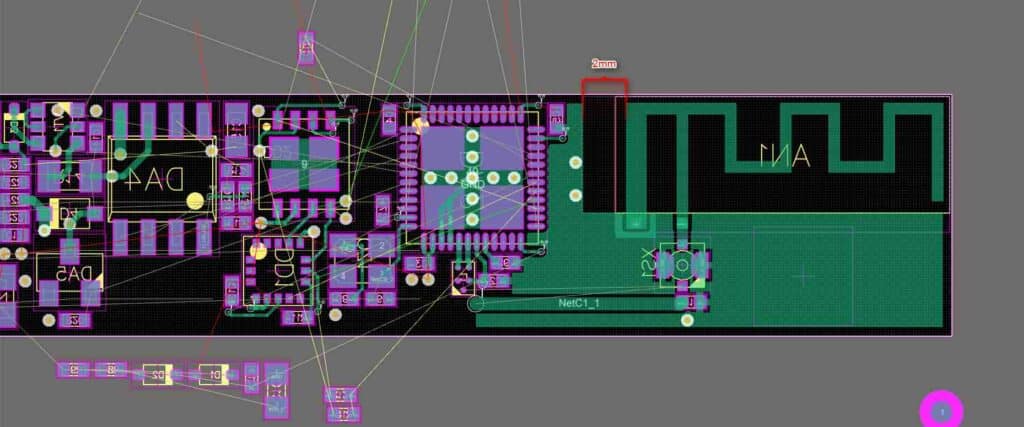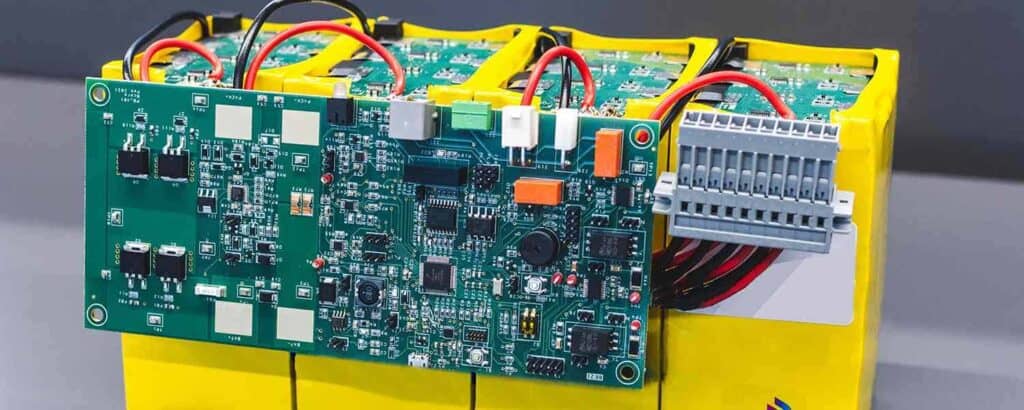Finite state machine digital logic design is a crucial concept in computer engineering. It is a mathematical model that is used to design digital systems and circuits. The model is made up of a finite number of states, inputs, and outputs.
In digital logic design, a state machine is a sequential circuit that has a finite number of states. The state machine changes from one state to another in response to inputs. Finite state machine design is used in a wide range of applications, including digital signal processing, control systems, and communication systems.
The design of a finite state machine involves identifying the states, inputs, and outputs of the system. The state machine is then modeled using a state transition diagram, which shows the transitions between the states in response to inputs. The design process also involves selecting the appropriate logic gates and flip-flops to implement the state machine.

Overview of Finite State Machines
Definition of Finite State Machines
A Finite State Machine (FSM) is a mathematical model that is used to represent a system that can be in one of a finite number of states at any given time. FSMs are commonly used in digital logic design, where they are used to describe the behavior of digital circuits.
An FSM consists of a set of states, a set of inputs, a set of outputs, and a set of transitions. The current state of the FSM is determined by the current input and the previous state. The outputs of the FSM are determined by the current state and the current input. The transitions between states are determined by the current state and the current input.
Types of Finite State Machines
There are two main types of FSMs: Mealy FSMs and Moore FSMs. In a Mealy FSM, the outputs are a function of both the current state and the current input. In a Moore FSM, the outputs are a function of only the current state.
Another type of FSM is the Deterministic Finite State Machine (DFSM), where each transition is uniquely determined by the current state and the current input. In contrast, a Non-Deterministic Finite State Machine (NDFSM) can have multiple transitions for the same current state and input.
Applications of Finite State Machines
FSMs are used in a wide range of applications, including:
- Digital circuit design
- Protocol design (e.g., network protocols)
- Compiler design
- Natural language processing
- Speech recognition
- Image processing
- Robotics
In digital circuit design, FSMs are used to design counters, sequencers, and controllers. In protocol design, FSMs are used to specify the behavior of network protocols. In compiler design, FSMs are used to recognize and parse programming languages. In natural language processing, FSMs are used to recognize and parse natural language. In speech recognition, FSMs are used to recognize and parse spoken language. In image processing, FSMs are used to recognize and classify objects in images. In robotics, FSMs are used to control the behavior of robots.
Overall, FSMs are a powerful tool for modeling and designing complex systems. By using FSMs, designers can create systems that are reliable, efficient, and easy to understand.
Digital Logic Design

Digital logic design is the process of creating digital circuits using various components such as logic gates, flip-flops, and registers. These circuits are used in a wide range of applications, including microprocessors, digital signal processing, and communication systems.
Combinational Logic Design
Combinational logic circuits are those in which the output depends only on the current input. The design of these circuits involves the use of logic gates, which are used to perform basic logical operations such as AND, OR, and NOT. Combinational logic circuits are used in many applications, including arithmetic and logic operations, multiplexers, and demultiplexers.
Sequential Logic Design
Sequential logic circuits are those in which the output depends not only on the current input but also on the previous inputs and outputs. The design of these circuits involves the use of flip-flops, which are used to store the previous state of the circuit. Sequential logic circuits are used in many applications, including counters, shift registers, and memory units.
Synchronous vs Asynchronous Design
Synchronous and asynchronous designs are two different approaches to designing digital circuits. Synchronous designs use a clock signal to synchronize the operation of the circuit, while asynchronous designs do not. Synchronous designs are more common and are used in most digital systems. Asynchronous designs are used in some specialized applications, such as low-power systems and systems with high noise levels.
In summary, digital logic design is an essential part of the development of digital circuits. The design process involves the use of various components such as logic gates, flip-flops, and registers. Combinational and sequential logic designs are two fundamental approaches to digital logic design, and synchronous and asynchronous designs are two different approaches to synchronizing the operation of digital circuits.
Designing Finite State Machines

State Diagrams
State diagrams are a graphical representation of a finite state machine. They are a useful tool to visualize the behavior of a system and identify the states and transitions that make up the machine. State diagrams consist of nodes (circles) that represent states and arcs (lines) that represent transitions between states. The state diagram can be used to determine the logic equations for the next state and output functions.
State Tables
State tables are a tabular representation of a finite state machine. They are useful for documenting and organizing the states, inputs, next states, and outputs of the machine. The state table provides a clear and concise way to represent the behavior of a system and can be used to derive the logic equations for the next state and output functions.
State Minimization Techniques
State minimization techniques are used to reduce the number of states in a finite state machine. This can result in a simpler and more efficient design. There are several techniques for state minimization, including state reduction, state assignment, and state merging. State reduction involves combining states that have the same behavior. State assignment involves assigning binary codes to the states to reduce the number of bits required to represent them. State merging involves combining states that have identical outputs for all inputs.
In conclusion, designing finite state machines requires a clear understanding of state diagrams, state tables, and state minimization techniques. By using these tools, designers can create efficient and reliable digital logic circuits.
Implementing Finite State Machines

Finite state machines (FSMs) are a useful tool for designing digital logic circuits. They allow for the creation of circuits that can perform a specific sequence of operations based on a given set of inputs. Implementing FSMs can be done using either hardware or software.
Hardware Implementation
One way to implement an FSM is to use hardware components such as flip-flops, logic gates, and multiplexers. The FSM is designed by creating a state diagram that shows the different states the circuit can be in and the transitions between them. The state diagram is then used to create a truth table that defines the output of the circuit for each combination of inputs and current state.
The truth table is then used to create a set of Boolean equations that describe the circuit’s behavior. These equations can be implemented using logic gates and other hardware components. The output of the circuit is then fed back into the input, creating a feedback loop that allows the circuit to cycle through the different states.
Software Implementation
Another way to implement an FSM is to use software. This can be done using a programming language such as C or Python. The FSM is designed by creating a state transition table that defines the behavior of the circuit for each combination of inputs and current state.
The software implementation of an FSM is typically easier to modify and update than a hardware implementation. This is because changes to the behavior of the circuit can be made by simply modifying the code, rather than having to redesign the entire circuit.
When designing an FSM, it is important to consider factors such as the number of states, the number of inputs, and the speed of the circuit. These factors can affect the complexity of the circuit and the resources required to implement it.
Overall, both hardware and software implementations of FSMs can be effective tools for designing digital logic circuits. The choice of implementation method will depend on the specific requirements of the circuit and the resources available for implementation.

